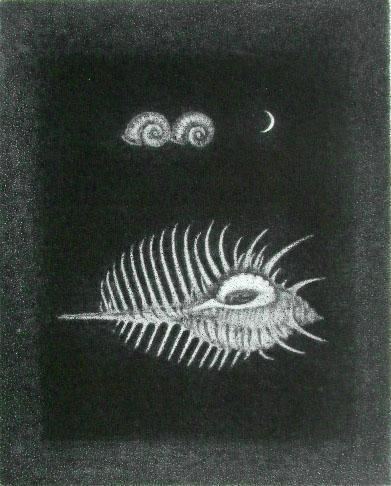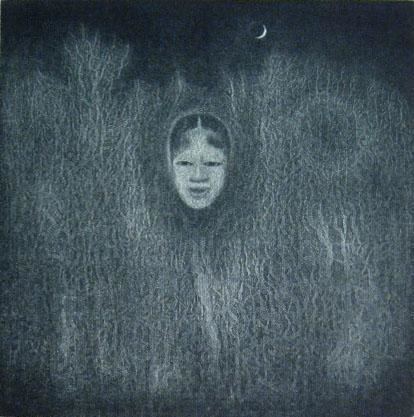Full Name 岩谷徹 Nationality Japanese | Name Toru Iwaya | |
Known for | ||
Toru iwaya
Toru Iwaya (岩谷 徹, Iwaya Tōru, born February 12, 1936) is a Japanese mezzotint engraver and painter.
Contents
- Toru iwaya
- Toru Iwaya
- Biography
- Personal life
- The French period
- The Japanese period
- Recurrent symbols in Iwayas works
- Awards
- References

Toru Iwaya
Biography

Born in Koriyama, Japan in 1936, the youngest child of Iwaya Kanekichi and Kageyama Matsu, Toru Iwaya went, at the age of 19, to Tokyo. After he graduated from the Tokyo Fisheries (東京水産), now called Tokyo University of Marine Science and Technology (東京海洋大学), at the age of 24, he moved back to Koriyama, where in 1965 at the age of 29 he married Keiko Sugano.
In 1971 at the age of 35 he moved to Paris, then deemed the art capital of Europe. The main reason for his move was the search for artistic inspiration. Toru Iwaya, self-taught in painting and engraving, wanted to be surrounded by an artistic environment.
Personal life
One of the main themes in Toru Iwaya's work is a strong nihilism and the constant battle he has fought throughout his life in searching for answers to life's existential questions. His mezzotint technique or "black technique", a method seldom in use today, expresses the depth of the inner world beneath the image represented on the dark surface.
His nihilism permeates most of his work, with few exceptions; indeed it may be seen as the predominant theme that drives his work.
Another recurrent theme is the noh mask. Noh masks have been used in Japanese musical drama since the fourteenth century.
Many of his works are in galleries around the world: in the Bibliothèque nationale de France; City Museum of Koriyama, Japan; City Museum of Fukuoka, Japan; and the New York Public Library; as well as in private collections.
The French period
Although he had started studying mezzotint engraving technique long before moving to Paris, his most productive period began when he moved to France in 1971. Owing to the poor living conditions he had while living in Paris, he devoted his energy to his work and to the mezzotint technique. It was during this period that he met and became a personal friend of the master mezzotint artist Yozo Hamaguchi. They did several exhibitions together in New York City. He personally regarded him as an older brother, a figure superior to himself.
During this period, he was influenced by many artists famous throughout Europe at that time, such as Paul Klee, Odilon Redon, Marc Chagall and Joan Miró. This is particularly evident in his Praise to Klee and Miró.
Although he was not directly involved in the atomic bombing of Hiroshima and Nagasaki, those two events had a big influence on his work, one that continues to this day.
A catalogue raisonné of his complete work Mezzotints by Toru Iwaya was published by the Oscar Art Co. Ltd in 1991.
The Japanese period
Toru Iwaya returned to Koriyama, Japan in 1999 due to his wife's deteriorating health and his sister's mental illness. He continues his work and has begun teaching his techniques to young students at his workshop.
